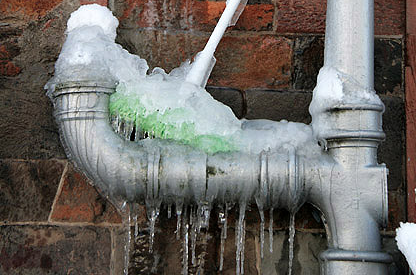Ways to Maintain Pipes from Freezing Damage: Crucial Guidance
Ways to Maintain Pipes from Freezing Damage: Crucial Guidance
Blog Article
Presented here below you might get some exceptional points on the subject of How to Prevent Your Pipes From Freezing.

Winter can damage your plumbing, particularly by freezing pipes. Right here's just how to avoid it from taking place and what to do if it does.
Introduction
As temperature levels decline, the risk of frozen pipes increases, possibly causing costly repair services and water damages. Understanding exactly how to stop icy pipelines is important for house owners in chilly climates.
Avoidance Tips
Protecting prone pipelines
Cover pipelines in insulation sleeves or utilize heat tape to shield them from freezing temperatures. Focus on pipes in unheated or exterior locations of the home.
Home heating techniques
Keep indoor areas adequately heated up, particularly locations with plumbing. Open up cupboard doors to allow warm air to circulate around pipes under sinks.
Just how to recognize frozen pipelines
Try to find reduced water flow from faucets, uncommon odors or sounds from pipes, and visible frost on subjected pipes.
Long-Term Solutions
Structural changes
Take into consideration rerouting pipes away from exterior walls or unheated locations. Add extra insulation to attic rooms, basements, and crawl spaces.
Updating insulation
Buy high-quality insulation for pipelines, attic rooms, and wall surfaces. Proper insulation aids preserve constant temperature levels and minimizes the danger of icy pipelines.
Shielding Exterior Plumbing
Garden hose pipes and exterior taps
Disconnect and drain garden hoses prior to winter season. Install frost-proof faucets or cover outside faucets with insulated caps.
Recognizing Frozen Pipes
What causes pipelines to freeze?
Pipes ice up when revealed to temperature levels listed below 32 ° F (0 ° C) for extended durations. As water inside the pipes freezes, it expands, taxing the pipeline wall surfaces and possibly creating them to rupture.
Threats and damages
Frozen pipes can result in water disruptions, residential or commercial property damage, and costly repair services. Burst pipes can flood homes and cause substantial structural damages.
Indicators of Frozen Piping
Recognizing icy pipelines early can stop them from bursting.
What to Do If Your Pipelines Freeze
Immediate activities to take
If you believe icy pipes, maintain faucets available to soothe stress as the ice melts. Use a hairdryer or towels soaked in hot water to thaw pipes gradually.
Conclusion
Stopping icy pipes calls for positive procedures and fast responses. By recognizing the reasons, indicators, and safety nets, house owners can shield their pipes throughout winter.
6 Proven Ways to Prevent Frozen Pipes and Protect Your Home
Disconnect and Drain Garden Hoses
Before winter arrives, start by disconnecting your garden hoses and draining any remaining water. Close the shut-off valves that supply outdoor hose bibs and leave the outdoor faucet open to allow any residual water to drain. For extra protection, consider using faucet covers throughout the colder months. It’s also important to drain water from any sprinkler supply lines following the manufacturer’s directions.
Insulate Exposed Pipes
Insulating your pipes is an effective way to prevent freezing. Pipe insulation is readily available at home improvement stores and is relatively inexpensive. Pay close attention to pipes in unheated areas such as the attic, basement, crawl spaces, or garage. Apply foam insulation generously to create a buffer against the cold. You can also wrap your pipes in heat tape or thermostat-controlled heat cables for added warmth.
Seal Air Leaks
Inspect your home for any cracks or openings that could let in cold air. Seal any holes around the piping in interior or exterior walls, as well as the sill plates where your home rests on its foundation. Additionally, make sure to keep your garage door closed unless you’re entering or exiting. Leaving it open creates a significant air leak that can lead to frozen pipes.
Allow Warm Air Circulation
During cold snaps, it’s essential to allow warm air to circulate evenly throughout your home. Leave interior doors ajar to promote better airflow. Open kitchen and bathroom cabinets to help distribute heat consistently around the rooms. If you have small children or pets, be sure to remove any household chemicals or potentially harmful cleaners from open cabinets for safety.
Let Faucets Drip
A small trickle of water can make a big difference in preventing ice formation inside your pipes. When temperatures drop significantly, start a drip of water from all faucets served by exposed pipes. This continuous flow helps prevent the water from freezing. Additionally, running a few faucets slightly can relieve pressure inside the pipes, reducing the chances of a rupture if the water inside does freeze.
https://choateshvac.com/6-proven-ways-to-prevent-frozen-pipes-and-protect-your-home/

I discovered that review about Prevent Frozen Pipes when browsing on the web. In case you liked our blog posting if you please make sure you remember to share it. Thanks so much for taking the time to read it.
Click Here Report this page